Topics List
Aug. 5, 2021 Updated
A new map of temperatures in Jupiter’s upper atmosphere reveals a solution to the planet’s “energy crisis”
Overview: the aurora that heats a planetSitting more than five times the distance from the Sun as the Earth, Jupiter is not expected to be particularly warm. Based on the amount of sunlight received, the average temperature in the giant planet’s upper atmosphere should be about 200 K or a chilly -73 Celsius. Instead, the measured value sits around 700 K or 420 Celsius. The source of this global heat has remained elusive for 50 years, causing scientists to refer to the discrepancy as an “energy crisis” for the planet. Now research led by James O’Donoghue (JAXA) has found the likely source of Jupiter’s thermal boost. By creating the highest resolution global maps to date of the temperature of Jupiter’s upper atmosphere, the team has revealed that the main source of the extra heat is Jupiter’s powerful aurora. Movie: Jupiter is first shown in visible light for context before an artistic impression of the Jovian upper atmos-phere's infrared glow is overlaid. The brightness of the upper atmosphere corresponds to temperature. From hot to cold: white, yellow, bright red, dark red. The aurorae are the hottest regions and the animation shows how heat may be carried by winds away from the aurora and cause planet-wide heating. The end of the ani-mation shows the real data with a temperature scale, indicating the observed global temperatures measured in the study. A still image is shown in Figure 3. (Credit: J. O'Donoghue (JAXA)/Hubble/NASA/ESA/A. Simon/J. Schmidt) Auroras occur when charged particles are caught in a planet’s magnetic field. These spiral along the field lines towards the planet’s magnetic poles, striking atoms and molecules in the atmosphere to release light and energy. On Earth, this leads to the characteristic light show that forms the aurora borealis and australis. On Jupiter, the material spewing from its volcanic moon, Io, leads to the most powerful aurora in the Solar System and enormous heating in the polar regions of the planet. Although the Jovian aurorae have been a long-standing candidate heat source for the majority of the planet, observations have previously been unable to confirm or deny this until now. Research detailsThe team observed Jupiter with the 10-metre Keck II telescope on Mauna Kea in Hawai’i for five hours on two separate nights in April 2016 and January 2017. Using the Near-Infrared Spectrometer (NIRSPEC) on the Keck II, emission from H3+ ions in Jupiter’s atmosphere was detected from the planet’s poles down to the equator. H3+ ions are a major constituent of the ionized part of Jupiter’s upper atmosphere and the intensity of the emission can be used to derive the temperature of that region. Previous maps of the upper atmospheric temperature were formed using images consisting of only several pixels. This is not enough resolution to see how the temperature might be changed across the planet, providing few clues as to the origin of the extra heat. In order to improve the situation, the team took a two step approach. The first step was to utilise the power of the Keck II to take many more temperature measurements across the face of the planet. The second step was to only include a temperature measurement in the final map of the atmosphere if the uncertainty in the recorded value was less than 5%. 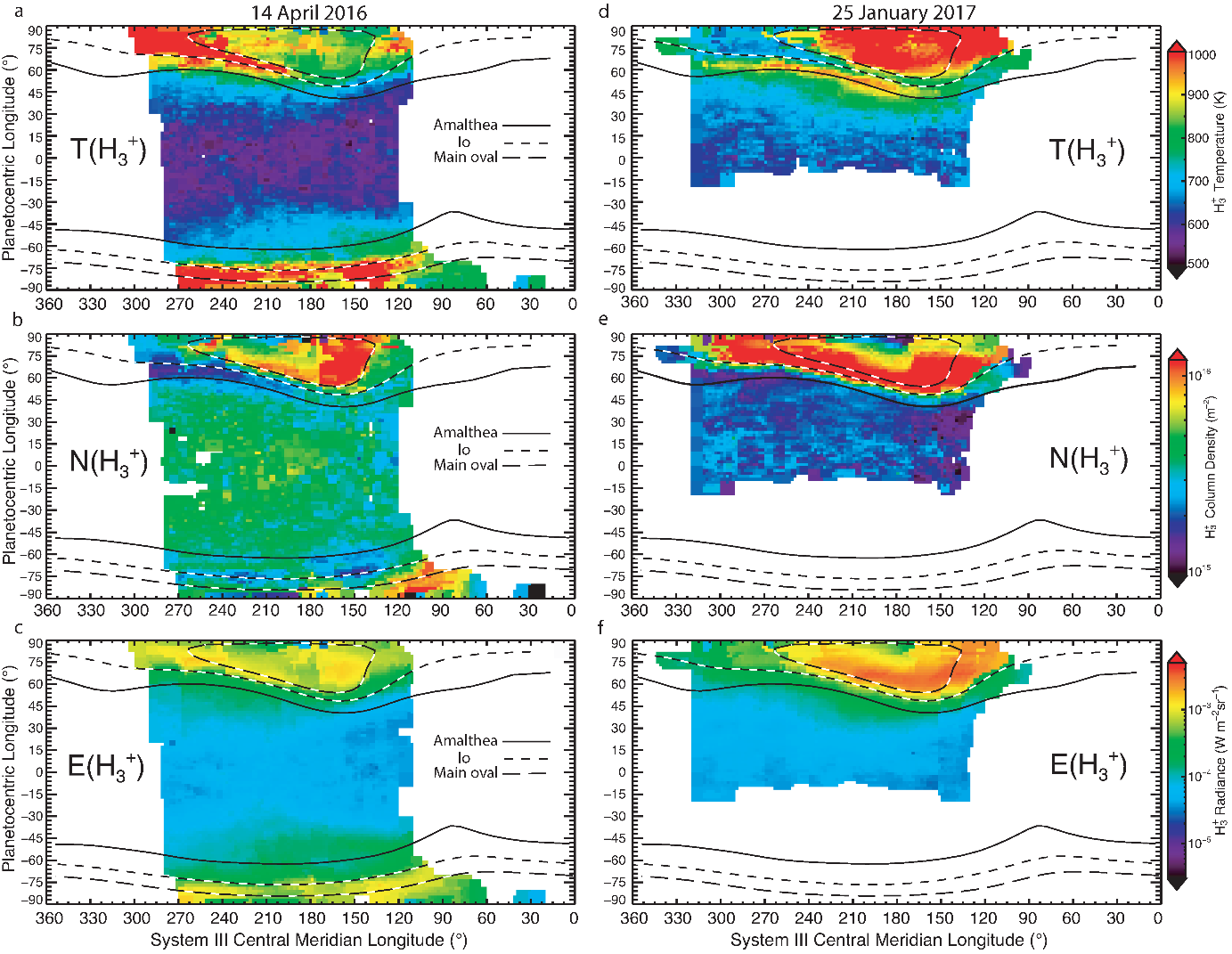
Figure 1: Temperature (top row), density (middle row) and radiance (lower row) of H3+ in Jupiter’s atmosphere (column-integrated). Long-dashed lines show the main region of the aurora, short-dashed line and solid line show the magnetic influence of the moons Io and Amalthea (Taken from O’Donoghue et al, 2021, Nature). To achieve this, the team created five maps of the atmospheric temperature at different spatial resolutions. The highest resolution map had an average temperature measurement for every 2 degrees longitude x 2 degrees latitude of the planet. Lower resolution maps averaged the temperature across regions 4 degrees x 4 degrees, 6 degrees x 6 degrees, 8 degrees x 8 degrees and 10 degrees x 10 degrees. If any temperature measurement in the highest resolution map had too high an uncertainty, the value from a lower resolution map with improved uncertainty would be substituted. The result was a map that combined the highest possible resolution with the lowest uncertainty in the measurements: the best of both worlds for analysis. “It took years of careful work to clean and map out the data and analyse it,” said James O’Donoghue. “The final products were temperature maps that are comprised of over ten thousand individual data points.” A clear trendThe temperature maps of Jupiter's upper atmosphere show clear gradients, with temperatures decreasing from the polar auroral regions to the equator. This demonstrated that Jupiter’s aurora was circulating auroral energy planet-wide, with winds carrying the heated atmosphere to lower latitudes and adjacent longitudes. The idea that the aurora could be the source of Jupiter’s mysterious energy had been proposed previously. However, global models of Jupiter’s upper atmosphere suggested that winds headed to the equator would be overwhelmed and redirected by west-ward winds driven by the planet’s rapid rotation. This would prevent the auroral energy from escaping the polar regions and heating the whole atmosphere. However, this new observational result suggests that such trapping is not occurring, and that the west-ward winds may be relatively weaker than expected compared with equatorward winds. 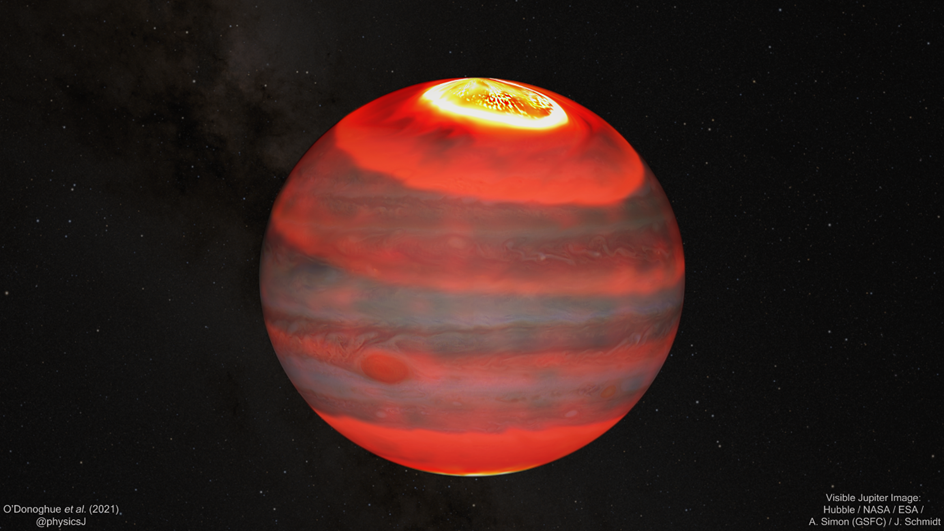
Figure 2: Jupiter is shown in visible light overlaid with an artistic impression of the Jovi-an upper atmosphere's infrared glow. The brightness of the upper atmosphere corre-sponds to temperature. From hot to cold: white, yellow, bright red, dark red. The aurorae are the hottest regions and show how heat may be carried by winds away from the auro-ra and cause planet-wide heating.
From orbit around the Earth, JAXA’s Hisaki satellite has observed the aurora-generating magnetic field around Jupiter since the mission’s launch in 2013. This long term monitoring has revealed that Jupiter’s magnetic field is strongly influenced by the solar wind; a stream of high energy particles that emanates the Sun. The solar wind carries its own magnetic field and when this meets Jupiter’s planetary field, the latter is compressed. Further evidence for this interaction and the resultant heating was found when the team observed an extended high temperature region of gas that appeared to be propagating from the aurora. At the time of observation, pressure from the solar wind was particularly high at Jupiter and the field compression is likely to have created an enhanced aurora. The resulting heat wave was the structure spotted by the team as it began to move away towards lower latitudes. "It was pure luck that we captured this potential heat-shedding event,” notes O’Donoghue. “If we’d observed Jupiter on a different night, when the solar wind pressure had not recently been high, we would have missed it!” The discovery of the temperature gradient extending between Jupiter’s auroral region and equator may end the planet’s “energy crisis”. However, while auroras are expected phenomenon on giant gaseous words, the complex state of their winds may determine how effective the heat source is on different planets. Journal paper informationArticle title: Global upper-atmospheric heating on Jupiter by the polar aurorae Journal title: Nature Date of publication: 5 August 00:00 (JST)
DOI: 10.1038/s41586-021-03706-wExternal Link
Authors:
Links:
|
Jan. 25, 2017 Updated
HISAKI, to Prove Solar Wind’s Influence on the Inner Magnetosphere of Jupiter
|
HISAKI, JAXA’S Spectroscopic Planet Observatory for Recognition of Interaction of Atmosphere presents the monitoring data that show solar wind influences Jupiter's inner magnetosphere, the most powerful in the solar system. The finding contradicts the previous hypothesis that solar wind influence on the planet’s inner part is negligible, since its magnetosphere is huge and is rotationally dominated. Research on the response of Jupiter's inner magnetosphere to solar wind requires long, continuous monitoring, just the type of observation HISAKI makes. Its one month long spectroscopic observation on Jupiter updates the theory. |
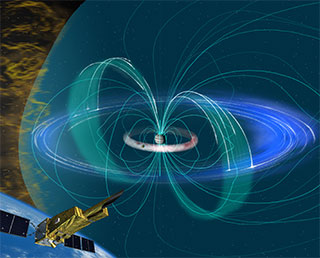
|
|---|
Mar. 24, 2016 Updated
“Hisaki” (SPRINT-A) captures the powerful Jovian auroras caused by the solar winds
|
“Hisaki” (SPRINT-A), in cooperation with NASA’s Chandler X-ray telescope and XMM Newton, observed Jovian auroras for 2 weeks. |
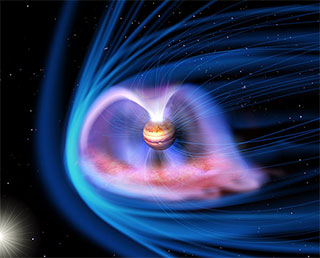
|
|---|
Mar. 25, 2015 Updated
HISAKI’s first observation of Jupiter’s magnetosphere
|
A research team led by Researcher Tomoki Kimura (researcher of the Japan Aerospace Exploration Agency as well as a research fellowship for young scientist of the Japan Society for the Promotion of Science) captured a sudden brightening (auroral expansion) through long-term continuous observations of Jupiter by the Spectroscopic Planet Observatory for Recognition of Atmosphere "HISAKI," and clarified for the first time in the world that this phenomenon was caused by the rapid rotation of Jupiter. |
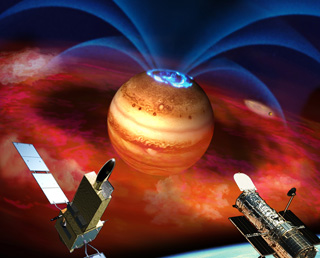
|
|---|
Sep. 26, 2014 Updated
HISAKI’s first observation of Jupiter’s magnetosphere
|
The Spectroscopic Planet Observatory for Recognition of Interaction of
Atmosphere "HISAKI" launched by the Epsilon Launch Vehicle on Sept. 14,
2013, observed Jupiter’s magnetosphere using its onboard extreme
ultraviolet spectroscope (EUV), and captured evidence that hot
electrons flow toward Jupiter. This is important proof to support
conventional theory. |
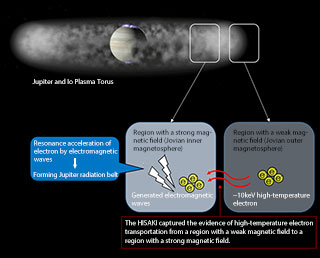
|
|---|
Sep. 15, 2013 Updated
HISAKI (SPRINT-A) Orbit Calculation Result and Critical Operation Period Completion
|
JAXA confirmed that the Spectroscopic Planet Observatory for Recognition of Interaction of Atmosphere "HISAKI" (SPRINT-A) was injected into the planned orbit after its orbit calculation. |
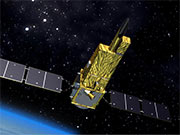
|
|---|
Sep. 14, 2013 Updated
SPRINT-A Solar Array Paddles Deployment and Nickname Decided
JAXA confirmed that the Spectroscopic Planet Observatory for Recognition of Interaction of Atmosphere (SPRINT-A) has deployed its solar array paddles (SAPs) normally at 15:49 p.m. today through data received at the Uchinoura Ground Station. The SPRINT-A was launched by the Epsilon-1 from the Uchinoura Space Center at 14:00 p.m. on September 14, 2013.
The satellite is currently in good health.
The SPRINT-A's nickname was also decided. It is "HISAKI" The name was chosen for the following reasons.
(1) "Hisaki" is the name of a cape in the Uchinoura area. (The cape at the tip of the Tsushiro Peninsula.)
(2) Our observation targets are beyond ("saki" in Japanese) the sun ("Hi" in Japanese).
Sep. 14, 2013 Updated
Launch Result of Epsilon-1 with SPRINT-A aboard
|
JAXA launched the first Epsilon Launch Vehicle (Epsilon-1) with the Spectroscopic Planet Observatory for Recognition of Interaction of Atmosphere (SPRINT-A) onboard at 14:00 on September 14 (Sat.), 2013 (Japan Standard Time, JST) from the Uchinoura Space Center. |
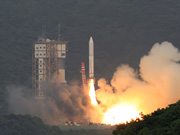 |
|---|
Sep. 12, 2013 Updated
Epsilon-1/SPRINT-A new launch date decided!
|
JAXA would like to announce that we have set the launch date and time of the first Epsilon Launch Vehicle (Epsilon-1) with the Spectroscopic Planet Observatory for Recognition of Interaction of Atmosphere (SPRINT-A) onboard as follows. |
 |
|---|
Sep. 9, 2013 Updated
New Launch Day Information for Epsilon-1 with SPRINT-A Onboard
|
The Japan Aerospace Exploration Agency (JAXA) decided to postpone the launch of the first Epsilon Launch Vehicle (Epsilon-1) with the Spectroscopic Planet Observatory for Recognition of Interaction of Atmosphere (SPRINT-A) onboard on August 27 from the Uchinoura Space Center. As a result of our cause investigation of the postponement and re-examination of the Epsilon-1, the new launch date will be September 14, 2013 (Japan Standard Time) or later. |
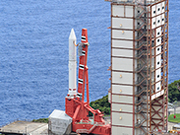 |
|---|
Aug. 27, 2013 Updated
Launch Cancellation of Epsilon-1 with SPRINT-A Onboard
|
The Japan Aerospace Exploration Agency (JAXA) cancelled today's launch of the first Epsilon Launch Vehicle (Epsilon-1) with the Spectroscopic Planet Observatory for Recognition of Interaction of Atmosphere (SPRINT-A) onboard from the Uchinoura Space Center, because an automatic stop alarm was issued as an attitude abnormality was detected approximately 19 seconds prior to the liftoff time during the automatic countdown sequence. The launch had been originally scheduled for 1:45:00 p.m. today (Japan Standard Time). |
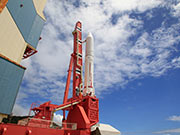 |
|---|
Aug. 8, 2013 Updated
Launch Postponement and Launch Time Change for Epsilon Launch Vehicle with SPRINT-A onboard
|
The Japan Aerospace Exploration Agency (JAXA) decided to postpone the launch of the first Epsilon Launch Vehicle (Epsilon-1) with the Spectroscopic Planet Observatory for Recognition of Interaction of Atmosphere (SPRINT-A) onboard to August 27, 2013,?from the Uchinoura Space Center as JAXA has taken extra time to rectify the incompatibility* found in the ground support equipment during the communication function test between the Epsilon-1 and the equipment in the course of launch campaign at the launch site. The launch was originally scheduled for August 22, 2013 from the center. |
 |
|---|
May 21, 2013 Updated
Spectroscopic Planet Observatory for Recognition of Interaction of Atmosphere (SPRINT-A) launch by Epsilon-1
|
The first Epsilon Launch Vehicle (Epsilon-1) with the Spectroscopic Planet Observatory for Recognition of Interaction of Atmosphere (SPRINT-A) onboard is determined to be launched on August 22 (Thursday, Japan Standard Time). The launch time is between 1:30 thru 2:30 p.m. (JST), and the launch site is the Uchinoura Space Center. |
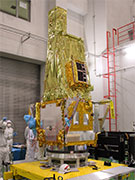 |
|---|